The TL;DR of how a board game comes to life:
- Start with a few core mechanics.
- Play it nonstop until you have something not-completely-garbage.
- Feed it love until you’re ready to show it to the world.
- Kill it and start all over again using the feedback you receive.
Read on below if you want more details! Relatedly, if you want to read about why I am making a board game, click here.
The birds and the bees
So you’re curious about how a board game is born. Well listen up kids, you’ve come to just the right place.
Let ol’ uncle Wonmin take you on a magical journey of how when a young professional hits his quarter-life crisis, he starts questioning the meaning of life.
Philosophical musings such as:
- “Yeah a promotion is nice but the added responsibilities aren’t.”
- “Do I need more money when what I have is enough?”
- “Can I put a price on my sanity?”
Here’s a picture for your short attention span.
Brainstorming sessions
Dropping the weird uncle metaphor, I started by sitting with my notebook for a couple hours every day for a week. Eventually I had a few ground rules that I envisioned for my game.
The very first thing I wrote in my notebook.
Some various high-level thoughts I had about game design.
Deciding on a theme for the game
For the tone or “feel” of the game, I imagined a game that was:
- tongue-in-cheek
- a bit depressed (but still optimistic)
- a social commentary on modern life
- anti-corporate / anti-rat-race
Perhaps my own experiences in corporate America made me jaded. But I wanted a game that suggested that there was more to life than simply putting in your hours at work. That a person’s goal in life can be found anywhere–even in the seemingly mundane day-to-day.
An example of the type of tone I wanted.
But of course, a theme is not what all that goes into making a fun game. The mechanics are just as important.
Complex abilities = fun, right?
There were several game mechanics that I had always wanted to incorporate into my game. I knew I wanted abilities in my game, so I chose three principles as the foundation for my game.
I wanted abilities that–
- can be used more than once.
- aren’t tied to any specific players.
- can change during the course of the game.
A list of random abilities that sounded awesome on paper.
There are a lot of games that focus on characters or ability selection during the setup of the game. That felt a bit too rigid for my tastes. I wanted a game where everyone started from the same blank slate and can adapt their play-style according to the flow of the current game.
The first ever prototype
The first iteration of the prototype was an ability drafting game where players used resources (such as karma or money) to select different abilities.
The mock-up game board for the first prototype.
The prototype was a steaming pile of 💩.
I had assumed that a large variety of abilities automatically made a game fun. I was so focused on creating abilities that I had no idea what the end goal was for my game. Despite my initial hypothesis, complexity did not automatically equal fun.
Adding movement and goals (à la Game of Life)
Taking a page out of the Game of Life, I wanted to create a “start” and an “end” that was a parallel to our lives. But a more modernized version that wasn’t so linear. Because life is anything but a linear path to the finish line.
Thus a loose theme of controlling a family of four on their journey through life was born. Using tiles instead of a set board, players would start in the same location and build their own path to the goals.
The first ever prototype using index cards, poker chips, and my little cousin’s Lego pieces.
One of the first iterations of "karma" cards.
Playtesting the crap out of your game (literally)
So there you have it! That’s pretty much the whole story of how the game came to life. The next step is to playtest it over and over again until your friends hate you for bugging them all the time.
But let me tell you, the feeling you get as a game developer when you see a player’s face light up as they have fun is unlike anything in this world. The fun times you share with them makes everything worth it and beats slaving away for a corporation any day of the week.
Some pictures from early playtest sessions.

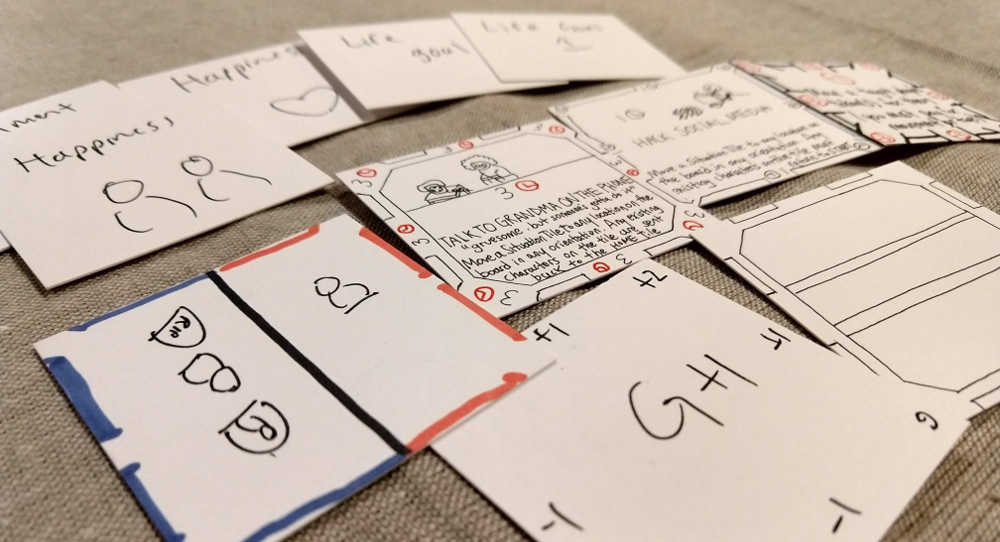
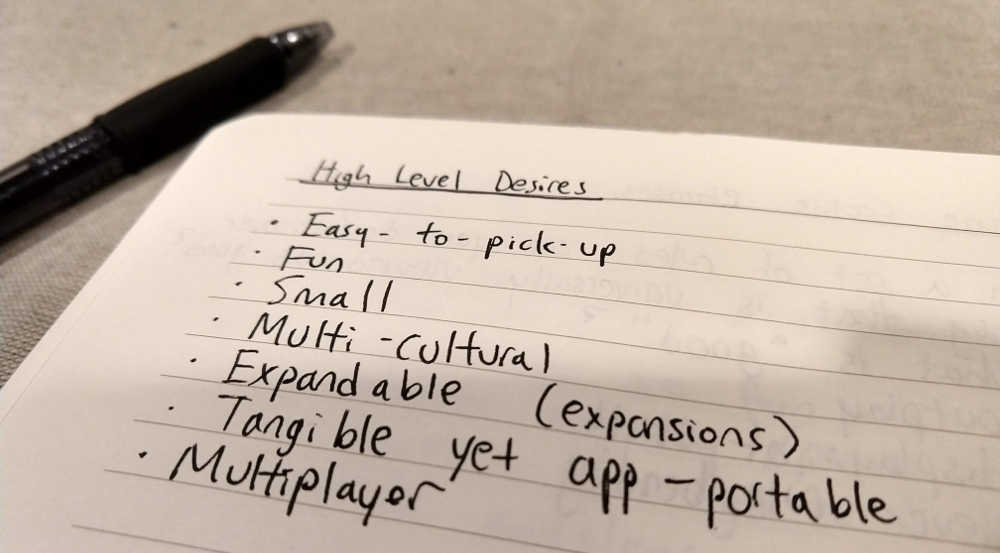
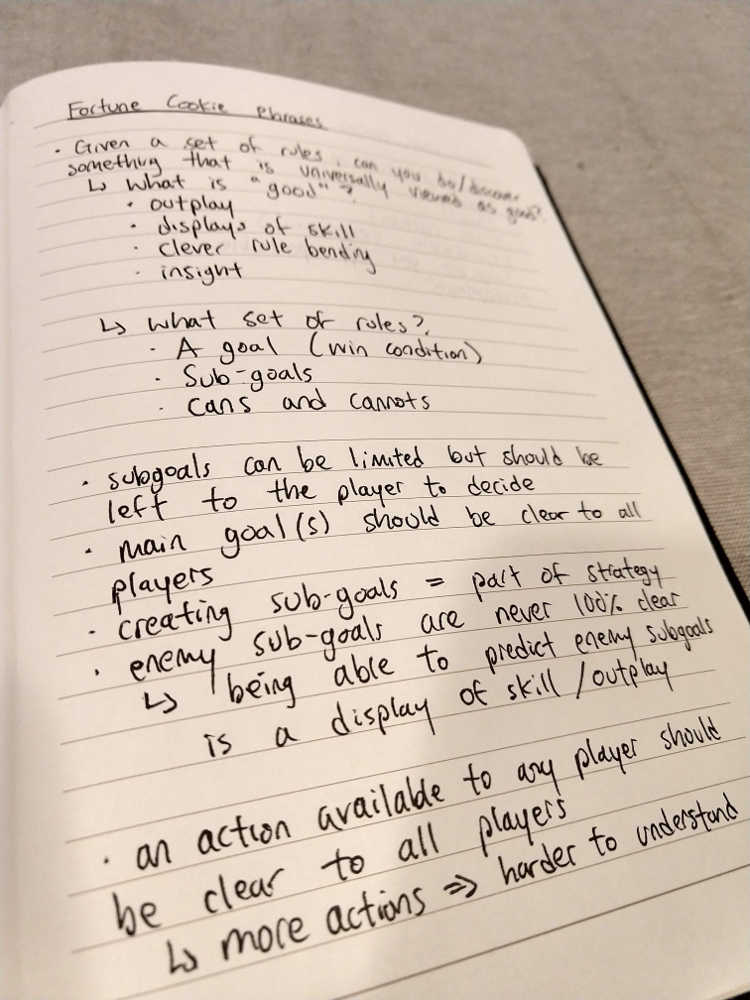
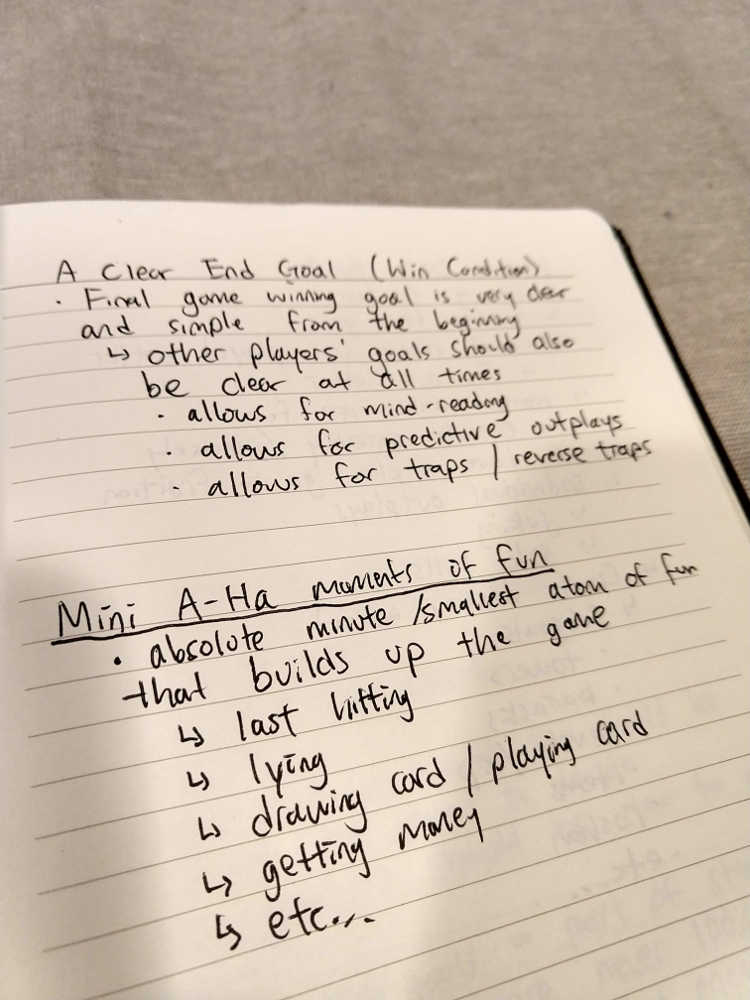
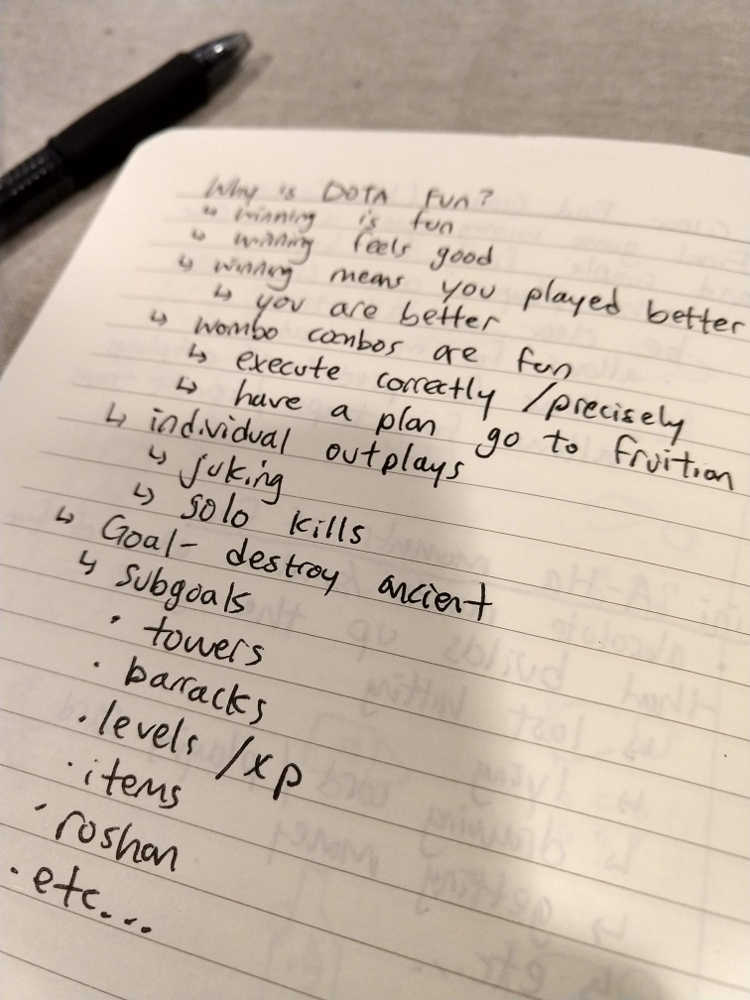
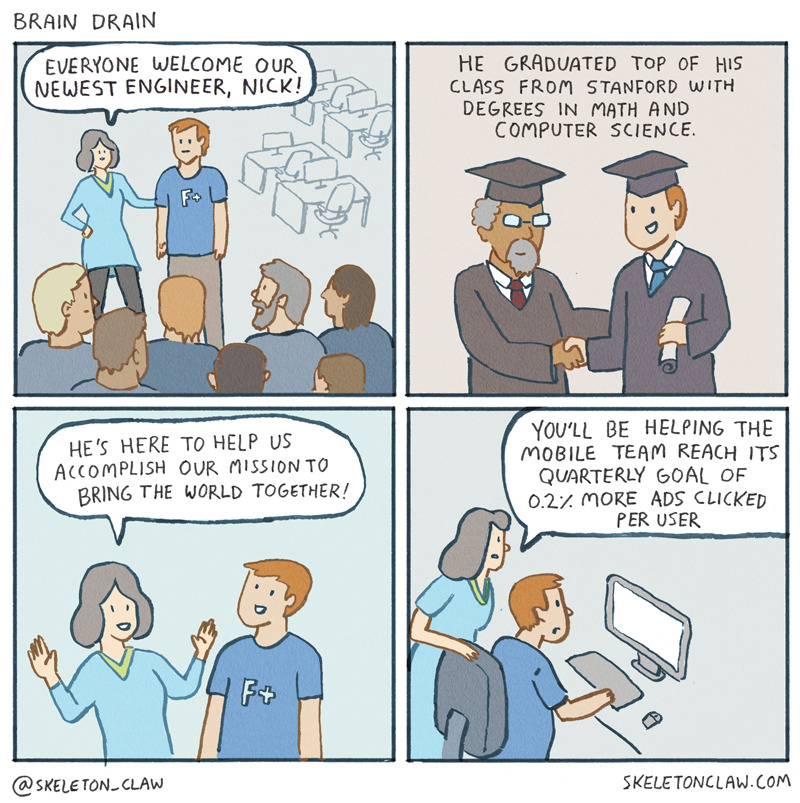
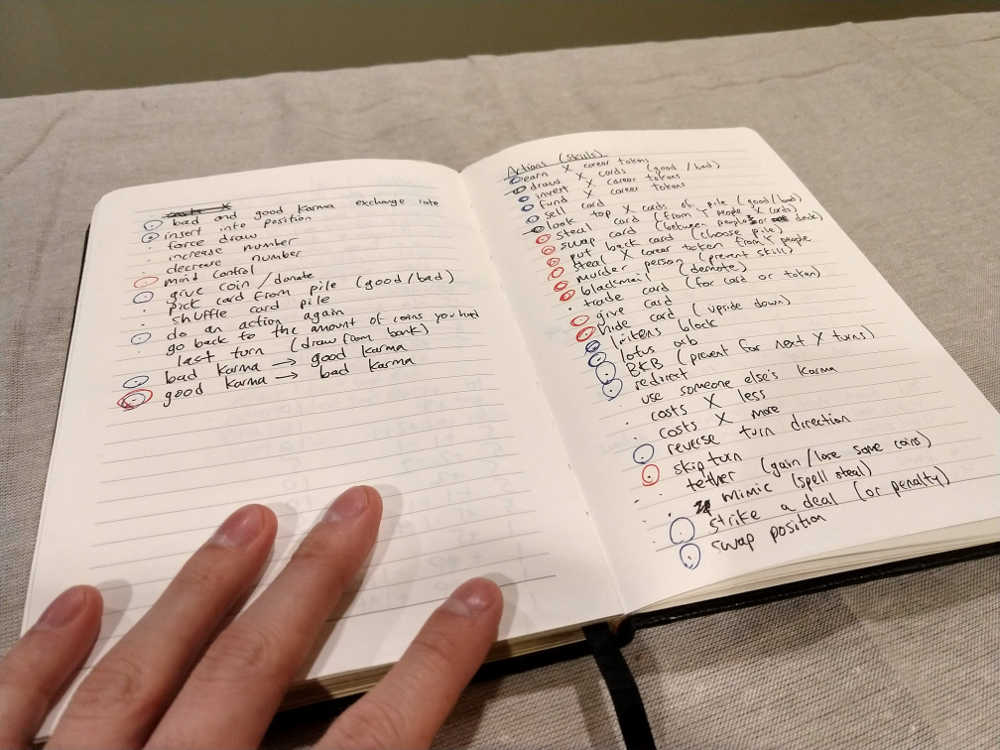
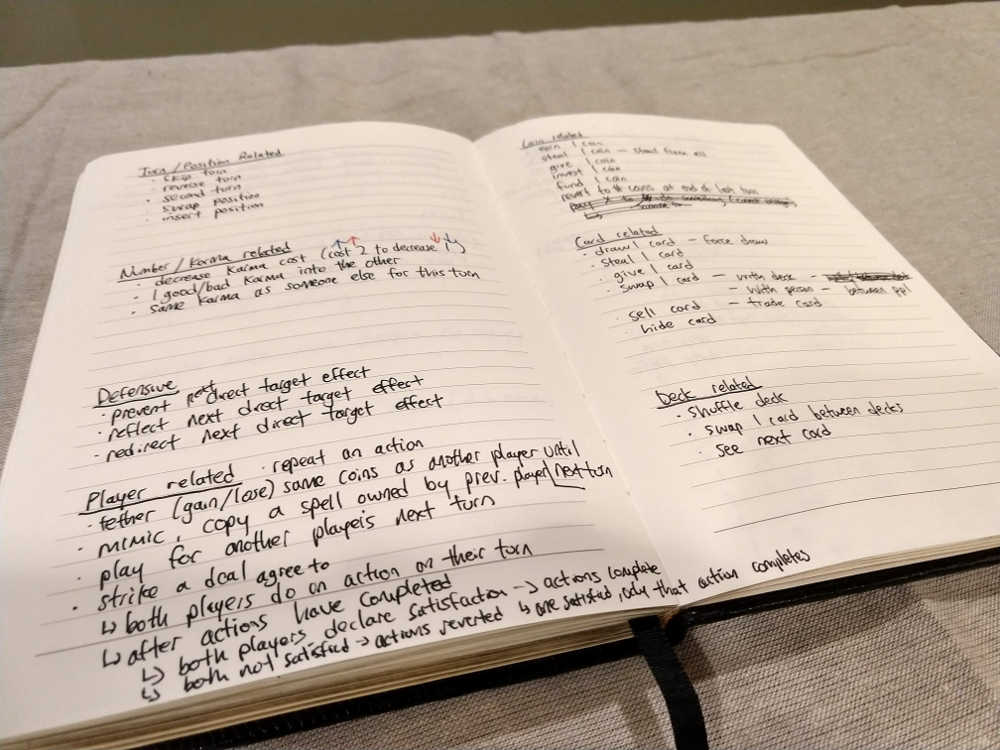
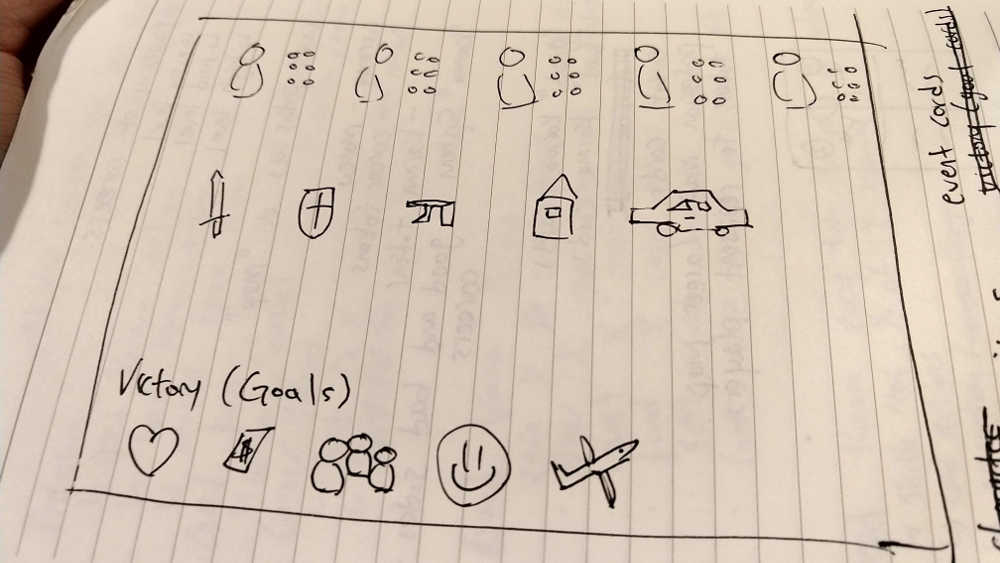
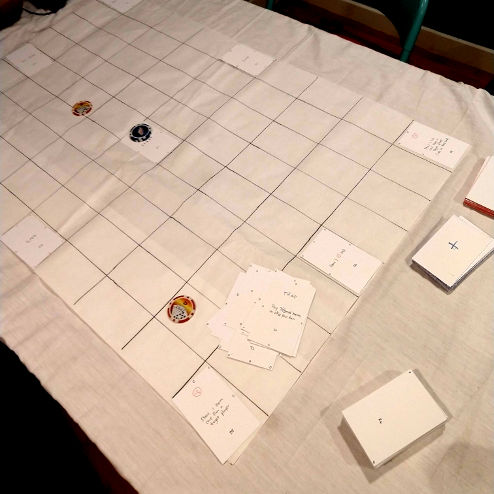

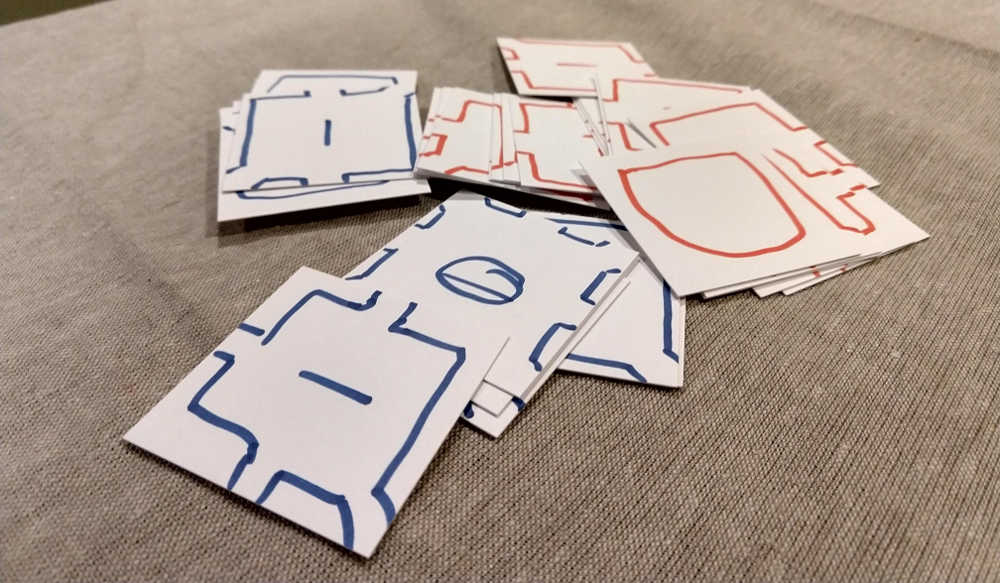
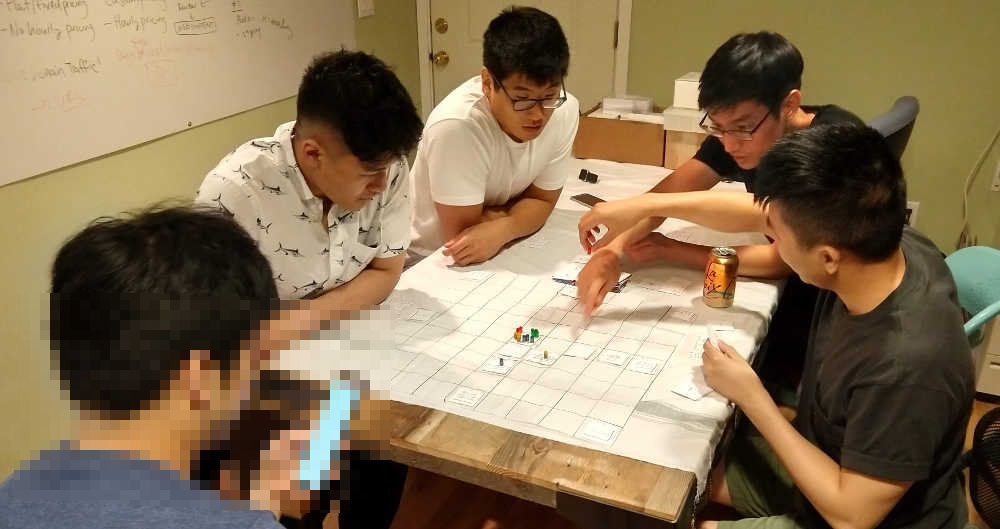
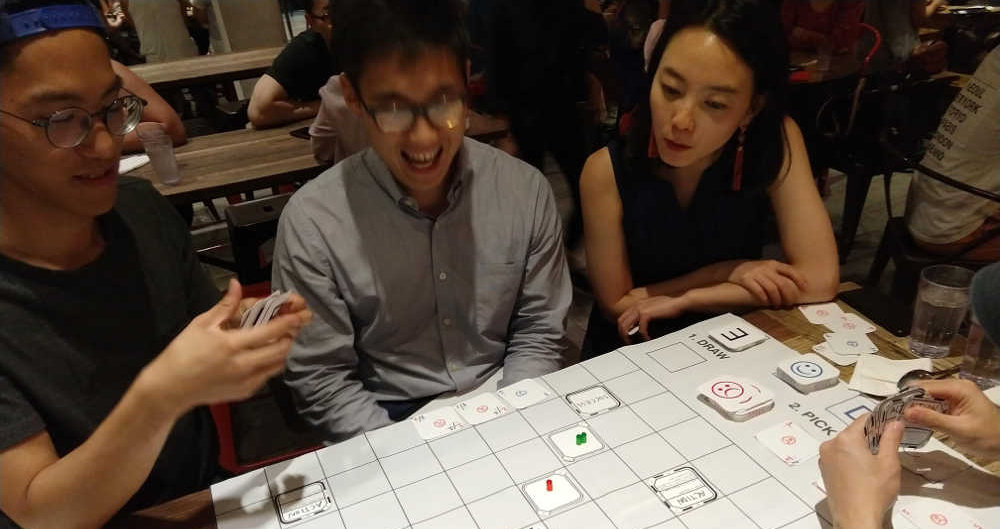
Comments